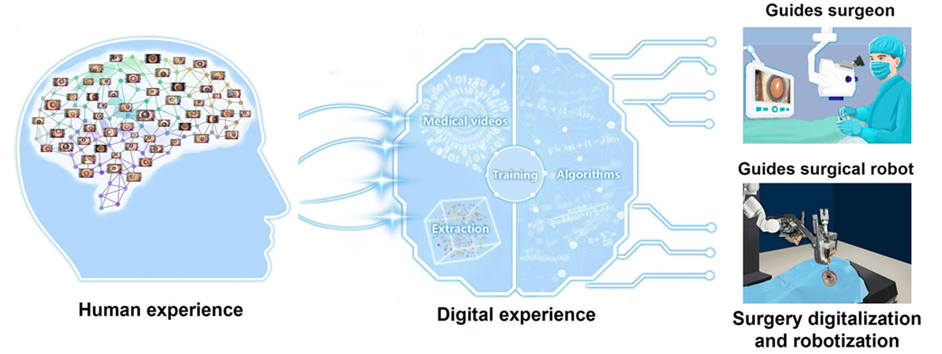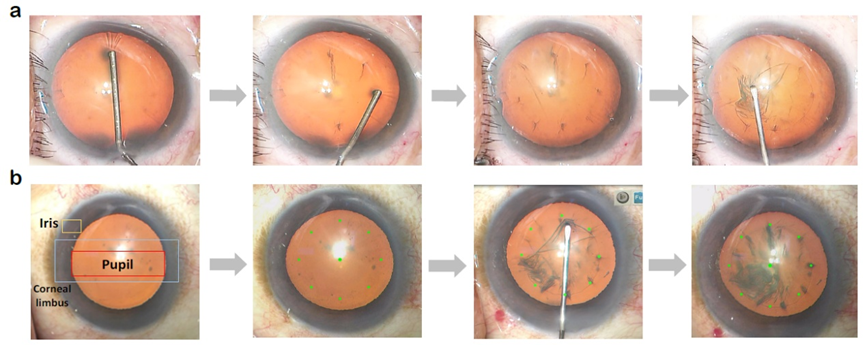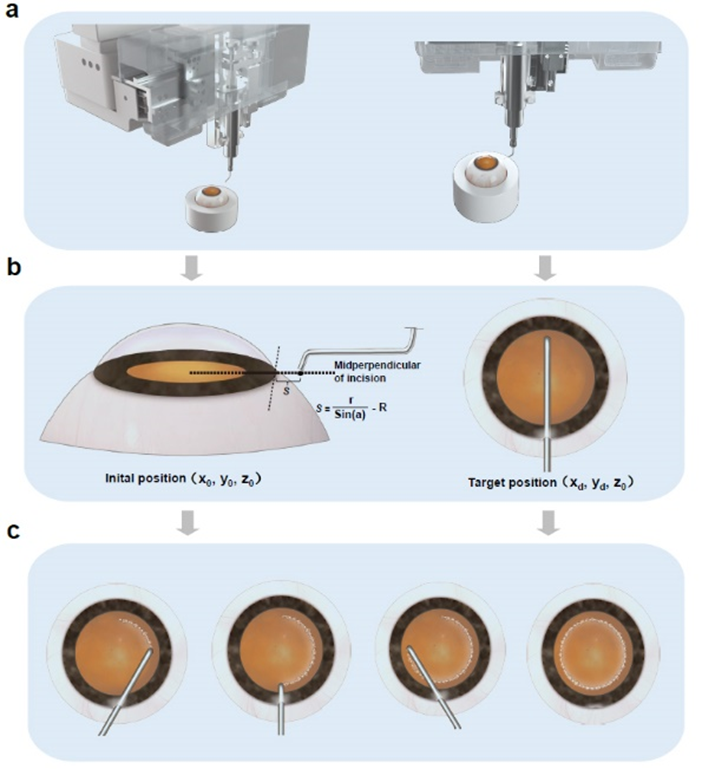

Research Background
Current cataract surgery relies heavily on the surgeon's personal experience and manual skill, leading to relatively low precision. Even for a seemingly simple step like capsulorhexis, the success rate for achieving centration that completely covers the edge of the intraocular lens (IOL) optic—as per guidelines—is low even among experienced surgeons. With the increasing application of functional IOLs, this issue has gained significant attention from surgeons, however, new technologies are still needed to address it.
The team of Prof. Liu Yizhi and Prof. Lin Haotian from Zhongshan Ophthalmic Center (ZOC), Sun Yat-sen University, in collaboration with Professors Huang Kai and Zheng Weishi from the School of Computer Science and Engineering at Sun Yat-sen University, has developed an intelligent system named MetaS to enhance capsulorhexis. By collecting videos of cataract surgeries performed based on surgeons’ experience and applying algorithms such as Mask R-CNN, GhostNet Backbone combined with FPN Neck, they transformed human experience into digital parameters, which is used to guide and improve the quality of the capsulorhexis (Figure 1).

Figure 1: The conceptual framework of the MetaS intelligent system
The research findings were published in NPJ Digital Medicine in August 2025 under the title "Digitalization of surgical features improves surgical accuracy via surgeon guidance and robotization."
Research Content
Development of the MetaS Intelligent System
The MetaS system comprises three functional modules: intelligent assessment, feature extraction, and surgical guidance. The team collected 17,538 videos of cataract surgery to train and validate the system. MetaS can evaluate and identify ideal capsulorhexis procedures. Using the Mask R-CNN algorithm, it extracts the path and features of an ideal capsulorhexis from videos and images. The results revealed that an ideal capsulorhexis has a radius (RC) of 0.58 times the limbal radius (RL) in pixels, a diameter range between 5.15-5.39 mm, a circularity of approximately 0.98, and a deviation from the center of less than 0.30 mm. Finally, the extracted digital path and features of the ideal capsulorhexis are applied to guide both surgeons and surgical robots during the procedure (Figure 2).

Figure 2: Flowchart illustrating the development of the MetaS intelligent system
Using MetaS-Extracted Digital Features to Guide Surgeons
measurable lens caliper (LC) (Figure 3a) and MetaS's real-time guidance module (Figure 3b) both significantly improved the accuracy and centration of capsulorhexis performed by surgeons.

Figure 3: Application of MetaS-extracted ideal capsulorhexis digital features for guiding surgeons.
Using MetaS-Extracted Digital Features to Guide Surgical Robots
The digital features of the ideal capsulorhexis extracted by MetaS can also be applied to guide a surgical robot in performing autonomous capsulorhexis. As shown in Figure 4, after creating the corneal incision, the robotic arm, holding the diathermy capsulorhexis tip, autonomously complete the capsulorhexis on the anterior capsule of porcine lenses according to the ideal path provided by MetaS.

Figure 4: A surgical robot autonomously performing capsulorhexis based on the digital features of the ideal capsulorhexis
Author Information
Professors Liu Yizhi and Lin Haotian from Zhongshan Ophthalmic Center, Sun Yat-sen University, are the co-corresponding authors of this study. Dr. Chen Xiaoyun, Associate Chief Physician from ZOC, Liu Jiali, a master's student from ZOC, and Liang Hongli, a PhD student from the School of Artificial Intelligence, Sun Yat-sen University, are the co-first authors. Zhongshan Ophthalmic Center of Sun Yat-sen University / the State Key Laboratory of Ophthalmology is the primary affiliated institutions.
Link to Original Article










